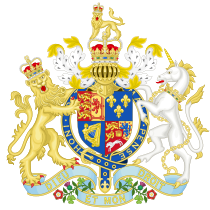A Royal Commission established in 1842 to investigate the cholera epidemic of 1831 concluded that London’s burial grounds were so overcrowded that it was impossible to dig a new grave without cutting through an existing one. It also reported that gravediggers throughout London were obliged to shred bodies in order to cram the remains into the limited space available.[1] Bodies had had to be stacked in heaps awaiting burial, and even relatively recent graves had to be exhumed to make way for new burials.[2] To address further public health concerns following the cholera epidemic of 1848, which resulted in the deaths of a further 60,000 people, the government passed a series of Burial Acts between 1852 and 1857 prohibiting almost all burials within the built-up area of the city of London.[3][a]Exceptions were allowed for at the favour of the monarch in St. Paul’s Cathedral and Westminster Abbey,[3] and for Quakers and Jews.[4]
The first of the Burial Acts, passed in 1852, was An Act to amend the Laws concerning the Burial of the Dead in the Metropolis (13 & 14 Vict. c. 52.), given the short title Burial Act 1852. It specified that no new burials were to take place in cemeteries within the metropolis, defined as “the Cities and Liberties of London and Westminster, the Borough of Southwark, and the Parishes, Precincts, Townships, and Places mentioned in the Schedule (A.) to this Act.”[4] All future burials were to take place in one of the seven large cemeteries recently opened a short distance from London, one of which, the 2200-acre (890 ha) Brookwood Cemetery in Brookwood, Surrey opened in 1849 by the London Necropolis Company, had space for 240,000 graves.[5] Connected to London by the London Necropolis Railway in 1854, it was at the time the world’s largest cemetery;[6][b]Dedicated trains took mourners and coffins from the London Necropolis Railway’s London terminus on Westminster Bridge Road directly into the cemetery.[7] it was projected that, on the basis of one body per grave with each grave being reused after ten years, it could accommodate London’s dead forever.[8]
The legislation was so well received throughout the country that in 1853 the government introduced a further Act To amend the Laws concerning the Burial of the Dead in England beyond the limits of the Metropolis (16 & 17 Vict. c. 134.).[9]

